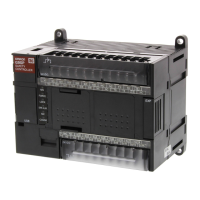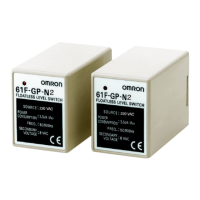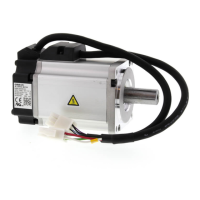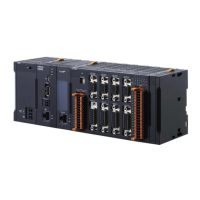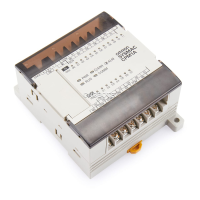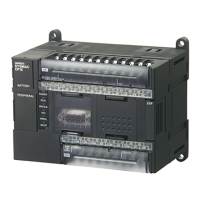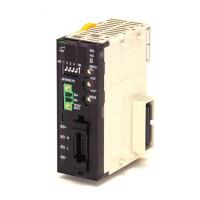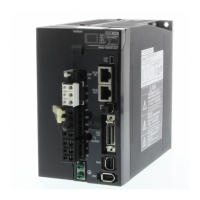38
G9SP-series Controllers Section 2-1
Relationship between Output Tags
The data of the output tags that are used in the program are output to the
Safety Output terminals according to the single/dual channel setting as shown
below.
n = Even number
Troubleshooting
Self-diagnosis of Safety Output terminals provides notification of the locations
and causes of errors. The following three methods can be used to check if
errors have been detected.
■ Checking with the I/O indicators on the Front of the G9SP-series
Controller
The G9SP-series Controller will light or flash the I/O indicators on the front
panel if an error is detected in the Safety Output terminals. This lets you iden-
tify the terminal where the error was detected. Refer to 2-1-1 Part Names and
Indicators for information on the indicator patterns.
■ Checking with the G9SP Configurator
If the G9SP Configurator is connected online when an error has been
detected in the Safety Output terminals, the terminal where the error was
detected and the cause of the error can be checked. Refer to 10-1 Monitoring
Devices for the procedures and displays for using the G9SP Configurator.
■ Checking with Option Board Communications
Option Board communications can be used when an error has been detected
in the Safety Output terminals to monitor the error location and error cause
from a Standard PLC. Refer to SECTION 7 Communications with a Standard
PLC Using an Option Board for detailed specifications on communications
procedures and data for Option Boards.
Single/dual Output tag value Output signal from
the Safety Output
terminal
Meaning of status
So (x) So (x)
Single Channel 0 0 Inactive (OFF)
1 1 Active (ON)
Single/dual Output tag value Output signal from
the Safety Output
terminal
Meaning of status
So (n) So (n+1) So (n) So (n+1)
Dual channel
equivalent
0 0 0 (OFF) 0 (OFF) Inactive (OFF)
0 1 0 (OFF) 0 (OFF) Output data error
(OFF)
1 0 0 (OFF) 0 (OFF) Output data error
(OFF)
1 1 1 (ON) 1 (ON) Active (ON)
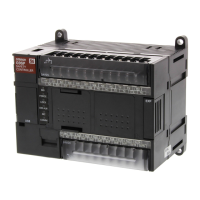
